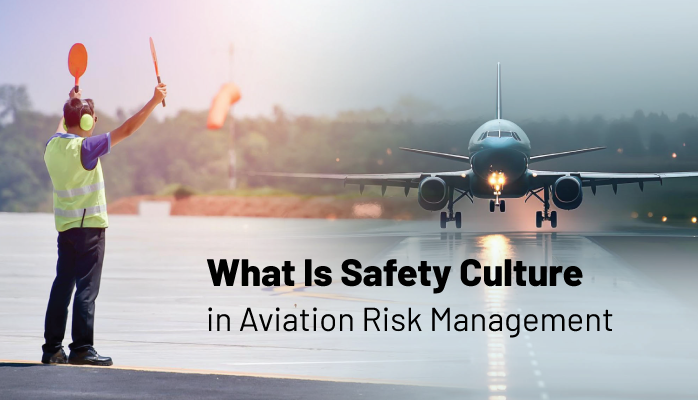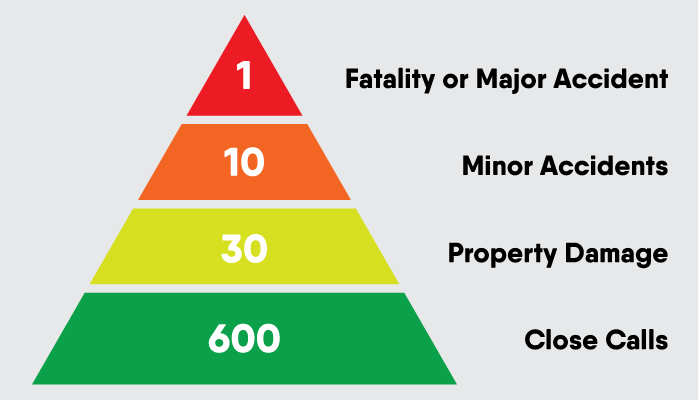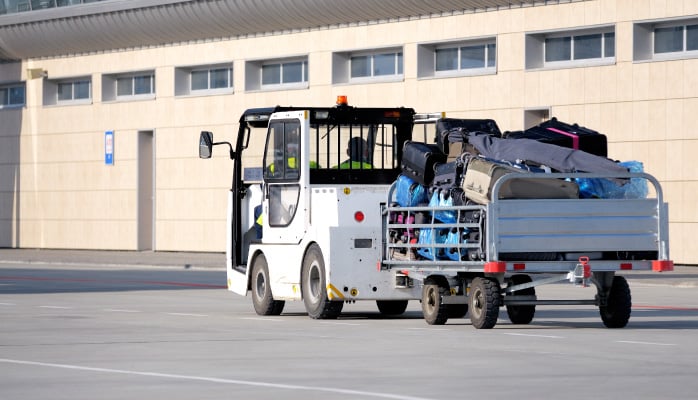Definition of Safety Culture in Aviation Risk Management

Safety culture in aviation safety management systems (SMS) is usually defined as being the safety attitudes, beliefs, behaviors, and values of employees in an organization. Unfortunately, such a high-level, conceptual definition of safety culture does not help safety manager address core personnel challenges in your organization's SMS.
In much of the SMS guidance material pushed out by regulatory agencies and standards-setting bodies, such as ICAO's document 9859 Safety Management Manual, we see condensed definitions of "what is safety culture" with a very, easy-to-understand phrase: "employees actions regarding safety when nobody is watching." I find this definition enlightening, but still too generic. How do safety managers measure safety culture or affect the safety culture in their organization? We need more information in this definition in order to be useful to SMS practitioners.
Another way to approach the question, what is safety culture, is to break it into multiple definitions based on how it works in safety management systems.
Related Aviation Safety Culture Articles
- What Is Safety Culture in Your Aviation SMS?
- 5 Characteristics of Effective Aviation Safety Cultures - With Free Survey
- Examples How to Improve Safety Culture in Aviation SMS - With Resources
What Is Safety Culture?
Safety culture:
- Has 5 distinct components (discussed in next section);
- Is usually established and distributed in a top-down manner;
- Is expressed in the safety behavior of employees; and
- Is reflected in safety performance.
The role of safety performance in aviation safety is as follows:
- SMS documents all safety-related elements;
- Safety management teams use SMS data and tools to improve safety culture;
- Safety culture results in certain positive/negative safety outcomes; and
- Based on these outcomes, management will make changes to SMS (closes the feedback loop).
To look at what safety culture is more specifically, let's look at the components of safety culture.
Components of Safety Culture in Risk Management

One of the primary reasons that generic definitions to answer what is safety culture don't work well is because they lump together distinct safety culture elements. This can easily lead to simplification and confusion over how to influence safety culture in a real-world scenario.
Safety culture can be broken down into the following 5 components:
- Hazard identification and safety reporting;
- Safety awareness;
- Safety communication;
- Willingness; and
- Management-employee relationships.
Hazard identification and safety reporting culture are how well employees are cognizant of hazards in their workplace environments and report identified safety concerns and incidents. Mature safety cultures will demonstrate consistently high numbers of safety reports, regardless of the severity of the underlying issue in question. Mature safety cultures report ALL safety concerns, regardless of their perceived importance to system safety. No issue is too small to report. In a mature safety culture, the mantra is: "Report every safety issue and allow the safety team to determine the effect on safety."
Safety awareness is how familiar employees are with past and recent safety concerns, and how mindful they are of the connection between
- their actions,
- the environment, and
- safety.
Safety communication is simply how quickly your organization can acquire data and apprise employees of changes, as well as the quality of interaction between employees and management. Mature safety cultures have regular safety communications and these safety communications are tracked to ensure employees are "getting the message." Without oversight (tracking safety messages), management remains uncertain whether safety communications are effective. When employees do not read safety communications, this indicates that safety culture needs improvement.
Willingness involves how readily all employees involve themselves in the SMS implementation's activities, and how open they are to receiving change. When employees identify safety concerns and are hesitant to report the safety concern in the safety reporting system, we see an obvious safety culture dilemma that needs to be addressed by a combination of:
- Reviewing safety policy to ensure it resonates with employees (trust);
- Ensuring a non-punitive reporting policy affords employees protections from managerial reprisals; and
- Regularly communicating these policies to employees using safety newsletters or safety messages.
Finally, management-employee relationships concern silos, corporate culture, and corporate cronyism, which kill safety culture.
Perhaps one reason that safety culture is difficult to define is that these five safety culture elements are highly intertwined or interrelated. For example, "management-employee relationships" correlate closely to "willingness." When employees cannot trust management because management has a "punitive managerial style," then the result is a lack of employee willingness to participate fully in the aviation SMS' activities.
Related Aviation Safety Culture Articles
- How to Build Safety Culture in Aviation SMS
- 5 Components of Safety Culture in Aviation SMS - With Examples and Resources
- 5 Simple Tips to Improve Aviation Safety Reporting Cultures
Signs of Mature Safety Culture

Here are 10 signs of a highly-functioning safety culture:
- Visible evidence for upper management support, including accountable executive "ownership" of the SMS;
- SMS implementation has required financial investment to hire qualified personnel and acquire proper SMS management tools, such as an SMS database;
- SMS has defined and regularly communicates types of valued safety behavior;
- Strong safety reporting culture with a high percentage of proactively identified hazards;
- Lack of repeat safety incidents;
- Low number of high-risk issues compared to minor issues;
- Employees comply with the procedure when the boss isn't watching;
- Safety issues, corrective actions, and audits are completed on time;
- High number of safety checklists that are regularly used; and
- Low employee turnover rate in the organization.
An effective safety culture will result in good safety performance. Safety reporting metrics will be high and most reported safety issues will be low risk. This is natural. Many safety professionals have become familiar with "Heinrich's triangle." Some may just call it the "accident triangle" or the 1:600 rule.
Heinrich was an industrial scientist in the early twentieth century who focused primarily on workplace safety. He proposed that for every major accident, there will be 600 minor incidents or close calls. Heinrich suggested that if these 600 close calls had been treated effectively, the major accident would have been avoided because the risk controls would have been reviewed and strengthened, thereby averting the major accident.
Signs of Poor Safety Culture in Aviation Environments
You can easily identify signs of bad safety culture by identifying the opposite of each item in the list of signs of mature safety culture. Beyond this, some other signs of poor safety culture are:
- Appointed safety executive does not take responsibility for the SMS implementation (no visible oversight);
- Active resistance to SMS implementation at the managerial level;
- Silos in departments or among management that attempt to subvert the SMS and handle departmental safety issues informally, thereby robbing the chance for system-wide improvements;
- Retaliation from managers or other employees against the person who reported a safety issue;
- Tendency for "blame" in safety events;
- Lack of front-line employee involvement in safety changes;
- Low number of safety reports (commensurate with the size of organization);
- High employee turnover rate due to conflicts with other employees;
- Employees don't know the safety manager's name; and
- Safety managers are operational department heads (strong potential conflict of interest).
It's very important that safety managers actively attempt to seek out and ameliorate such problems in the SMS implementation, as they can be incredibly destructive.
Related Aviation Safety Culture Articles
- What Does Aviation Safety Culture Look Like?
- How to Develop Healthy Safety Reporting Cultures in Aviation SMS
- 8 Charts to Monitor Safety Culture Performance in Safety Management Systems (SMS)
Steps for Improving Safety Culture in Aviation SMS

Improving aviation safety culture is probably the most commonly failed undertaking of safety managers. Why do so many safety managers fail to successfully improve safety culture? Some reasons are:
- Toxic organizational culture filled with distrust toward management;
- Employees and managers alike practice "information hoarding" vs "information sharing;"
- Safety managers do not persevere with safety promotion efforts over a prolonged period;
- Safety managers don't have the tools to effectively communicate and track safety communications;
- Lack of sincere, visible, upper management support;
- Don't correctly identify what needs to be improved;
- Inaccurate understanding of what safety culture is;
- Lack of knowledge for techniques to use to improve safety culture; and
- Poor understanding of what specifically safety culture is.
Here is an effective set of steps (in order) for improving safety culture;
- Ensure you understand what safety culture is, including its components, multiple definitions, etc.;
- Correctly identify areas of poor safety culture in your organization (measure your safety culture);
- Understand what positive safety culture looks like so you know what to work towards;
- Target improving hazard identification capabilities and safety reporting culture;
- Target improve safety awareness;
- Audit safety communication techniques, tools, and quality; and
- Work on breaking down silos and/or corporate culture.
Of course, these steps may take years to fully address. To some extent, a safety culture is always a work in progress. And this is perhaps why safety managers fail.
Safety Managers Fail to Change Safety Culture Due to Tools
Changing an entrenched safety culture is a long-term project. This holds especially true for both older companies and aviation service providers who hire a large percentage of older, more senior employees. Older employees and companies know from experience what has historically worked to make their companies successful. They are naturally resistant to change. However, safety managers should not always point their fingers at others to blame for their failures.
Safety managers are busy people and as such, they may become so distracted during their day-to-day duties that they forget or purposefully neglect to continue safety promotion campaigns. Safety promotion activities, such as safety newsletters and safety surveys, take considerable time and energy to execute. Safety managers also need tools to easily distribute safety promotion messages.
Finally, safety managers benefit from analytical tools to measure whether your safety promotion activities are making a visible change to safety performance. If you cannot measure responses to your safety promotion campaigns, how can you expect to make timely changes when you finally realize that your safety promotion messages do not resonate with the employees?
Year after year, I have seen safety managers fail to improve their safety cultures because they lack integrated tools to:
- Easily deliver safety communications to the individual employee level;
- Monitor responses to the safety communications (track communications for being read, or for logging employee resistance to the message);
- Set and track safety objectives that focus on developing the safety culture;
- Define and monitor KPIs reflecting changes in safety culture; and
- Allow all managers to easily monitor safety performance in their specific area of operations, such as a department or a division.
Aviation SMS database tools are not very expensive when considered next to the cost of employee salaries or other equipment. Several low-cost, commercially available SMS databases have safety promotion tools integrated into one platform. The benefit of these integrated safety management databases is that you can use one system to store all SMS documentation requirements. Since all the data resides in one system, safety managers find it easier to deliver safety promotion campaigns and also evaluate progress from these safety promotion efforts.
Related Aviation SMS Database Articles
- How to Choose the Best Aviation Safety Database Software
- 7 Signs You Need an Aviation Safety Management (SMS) Database
- When to Design Your Own Aviation SMS Database
Final Thoughts on Safety Culture
Without effective safety promotion activities, the safety culture will not mature. A healthy safety culture is required for the aviation SMS to maximize the return on investment. Otherwise, employees will not report safety issues or they may not be responsive when creating safety issues.
When employees are not reporting safety issues, the aviation SMS starves for the fuel it needs to improve operational safety. This fuel we are referring to is the safety report. When employees neglect to report (or are instructed not to report) all the minor safety occurrences, management is not allowed to review the safety issue and determine whether the risk is reduced to as low as reasonably practical (ALARP).
Furthermore, when minor incidents continue to go unreported, management does not have time to evaluate the hazards and determine the suitability of implemented risk controls. I'm hoping you now realize the critical importance of safety culture to your aviation SMS implementation.
A low-cost, commercially available SMS database saves time and greatly amplifies the safety manager's efforts. To learn how your aviation SMS can benefit from an SMS database, please watch these short demo videos.
Last updated in January 2025.







